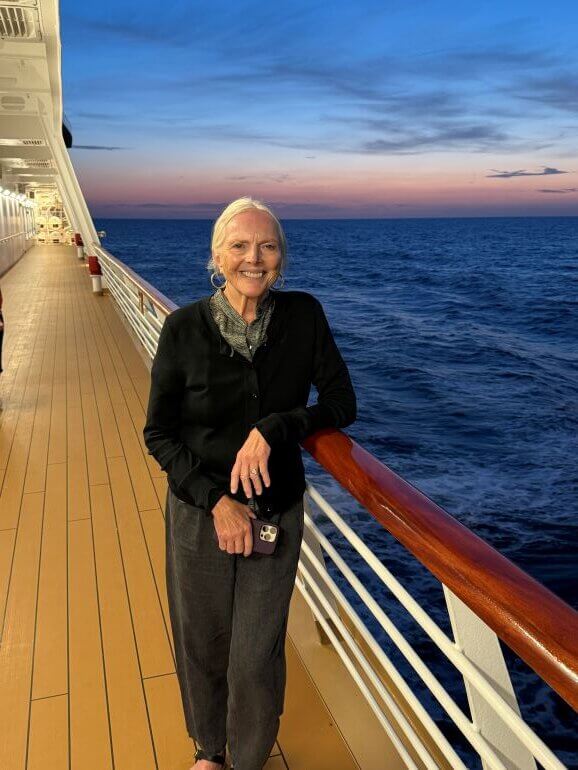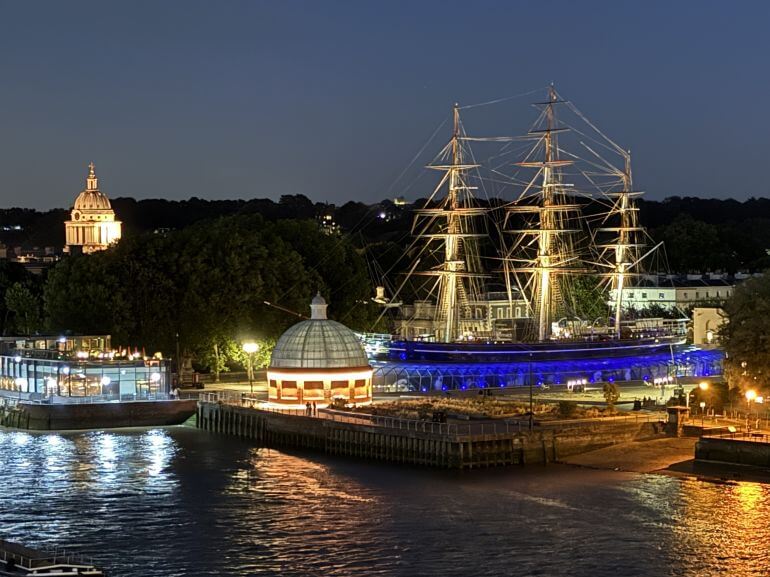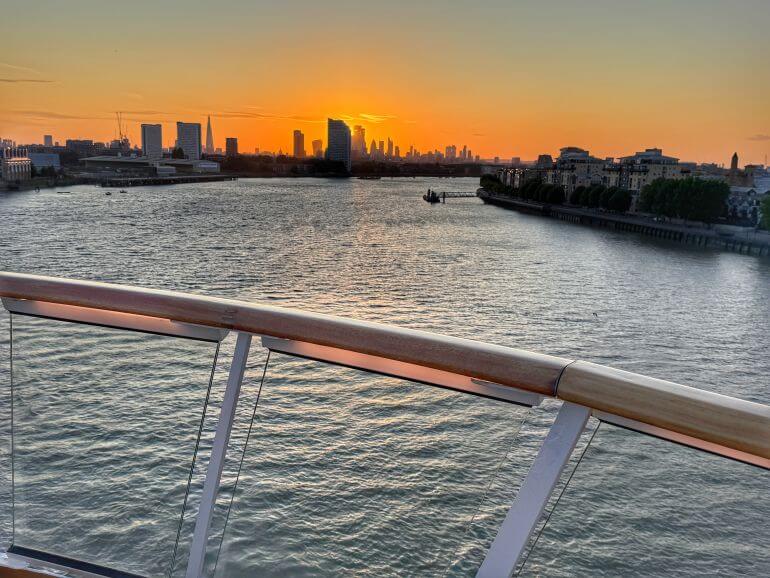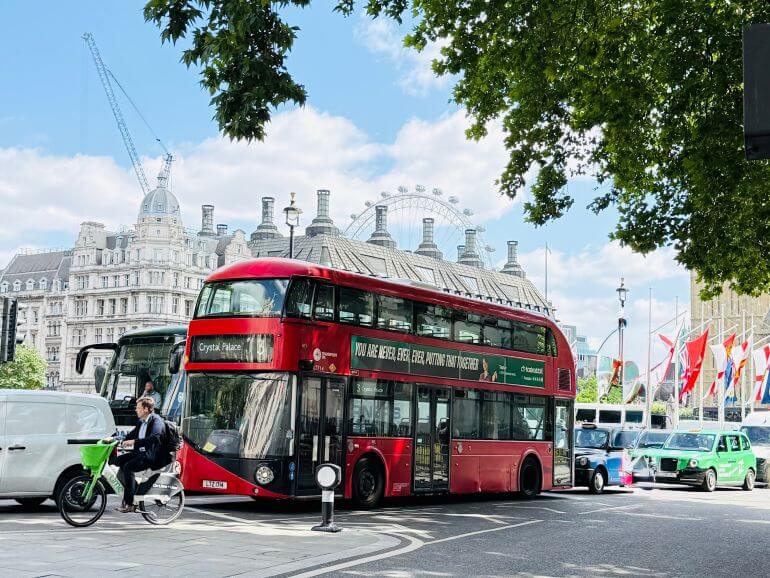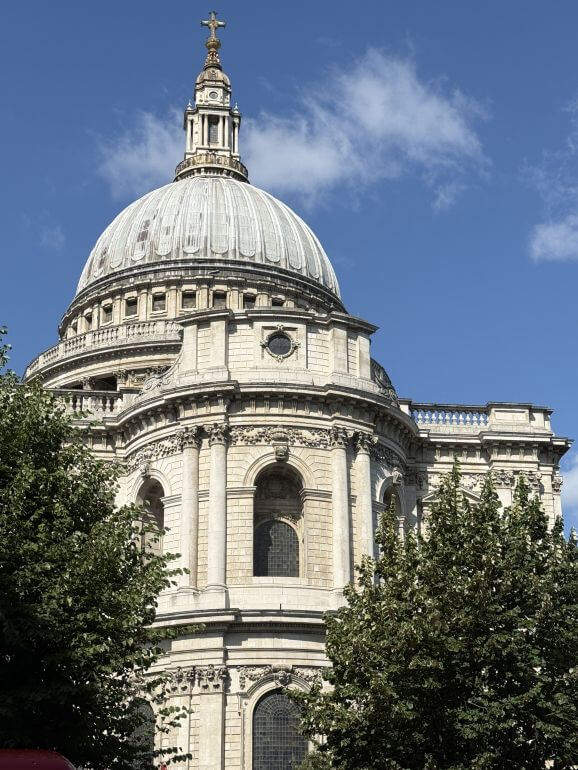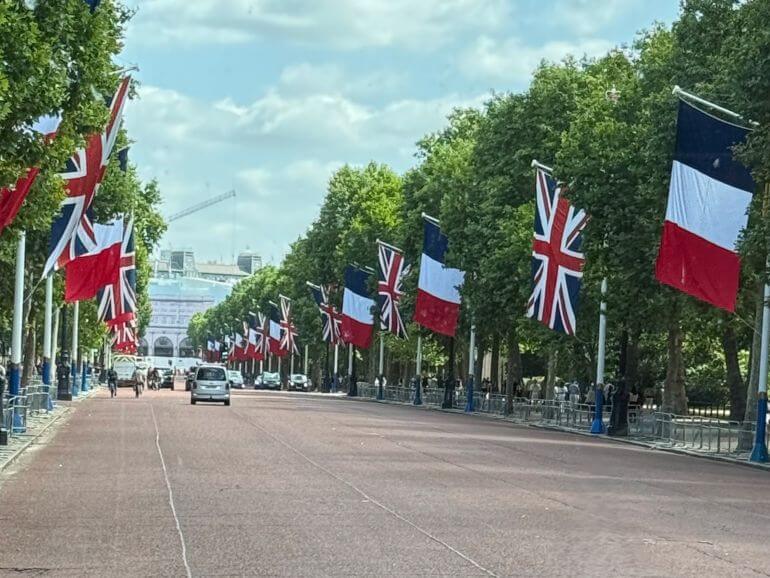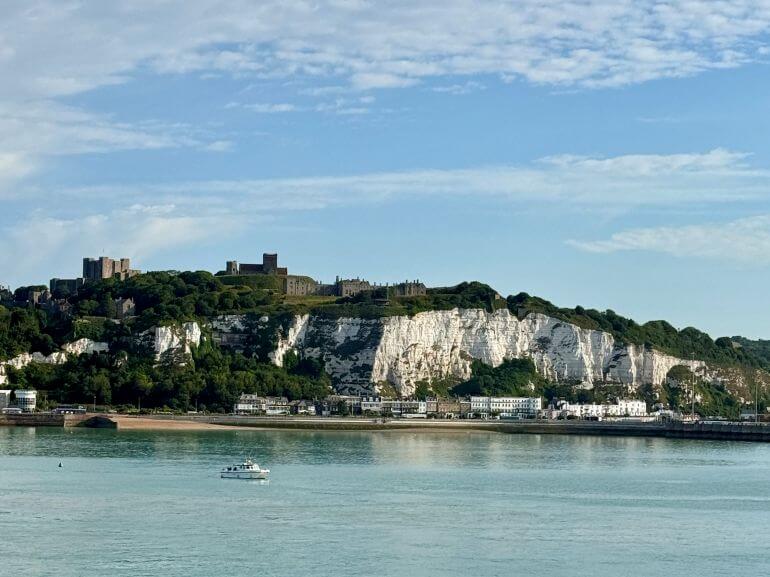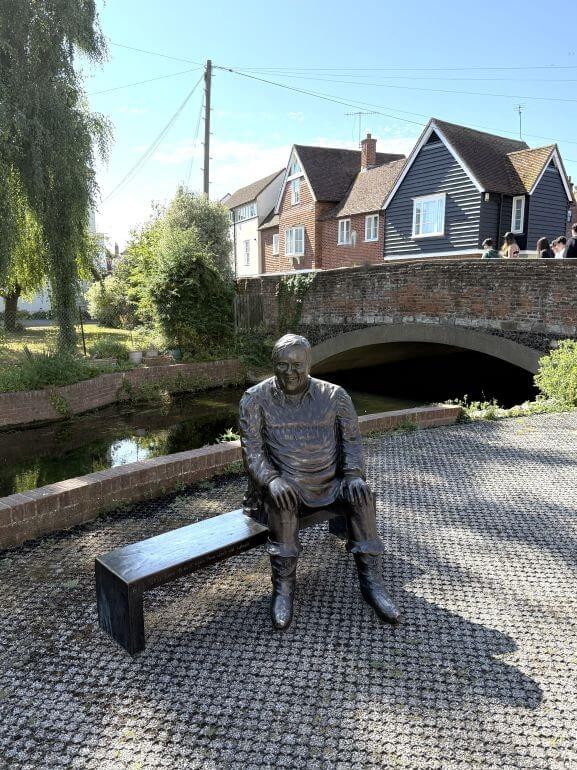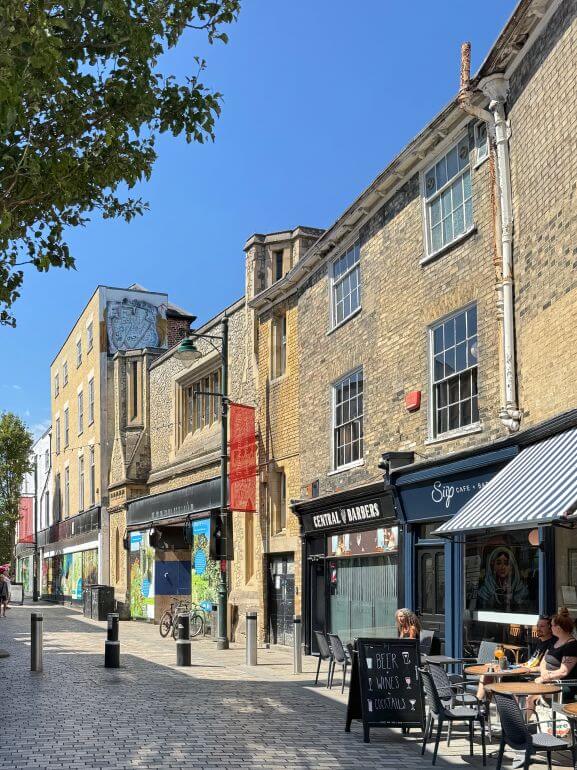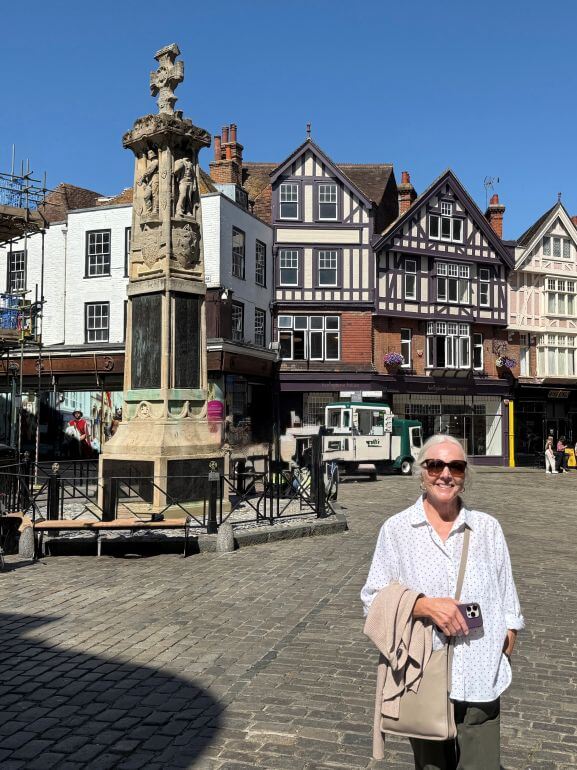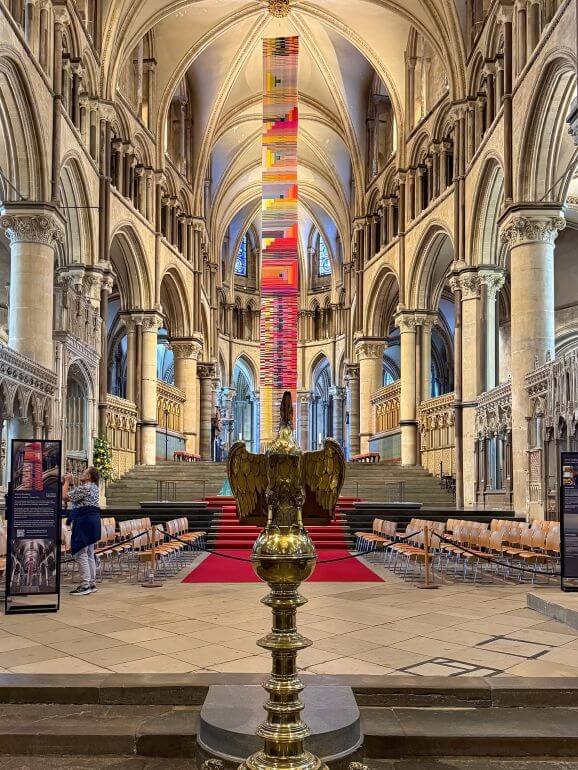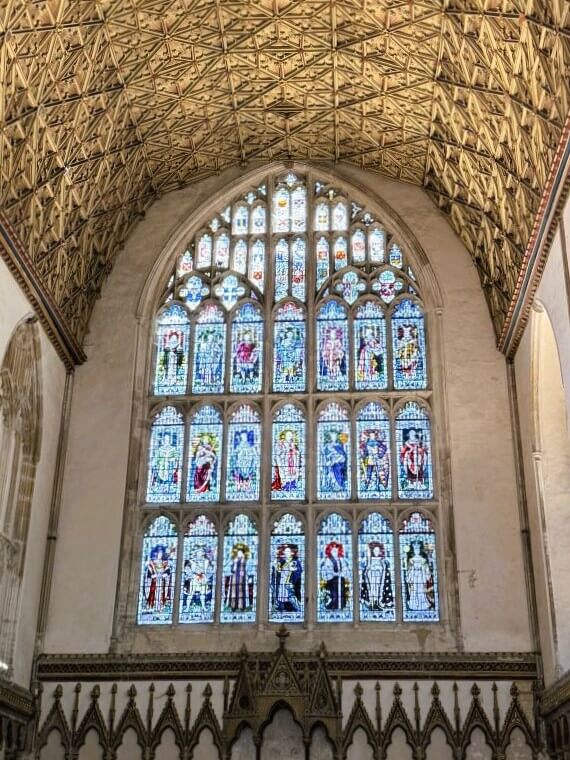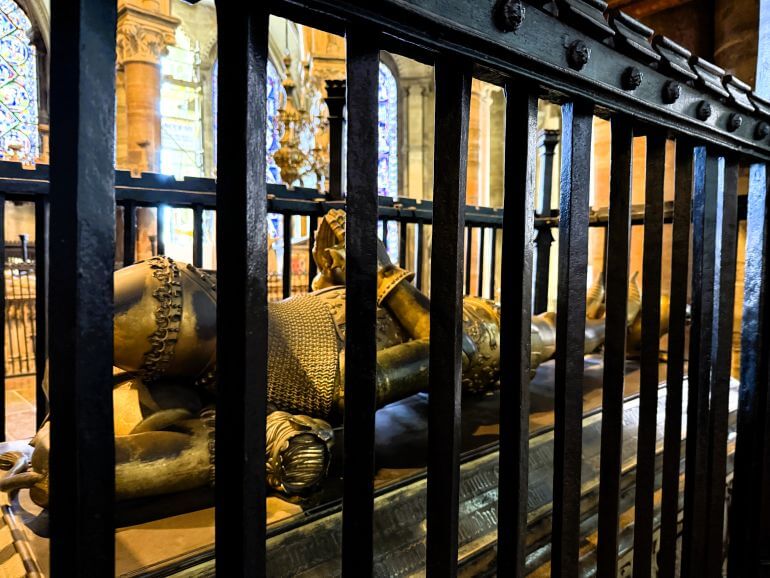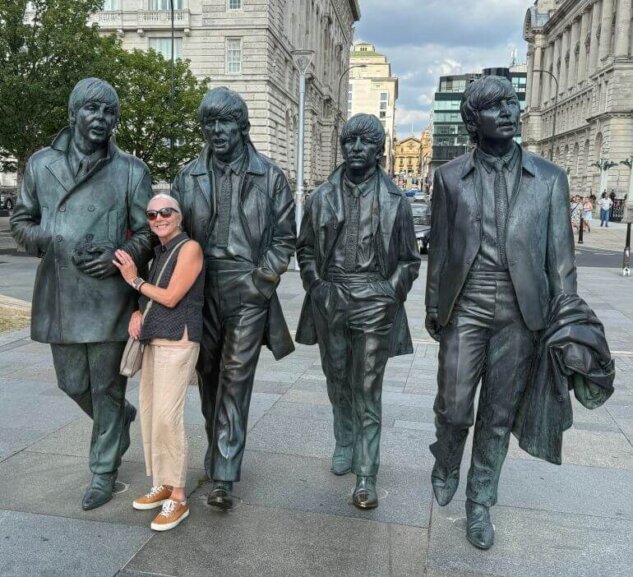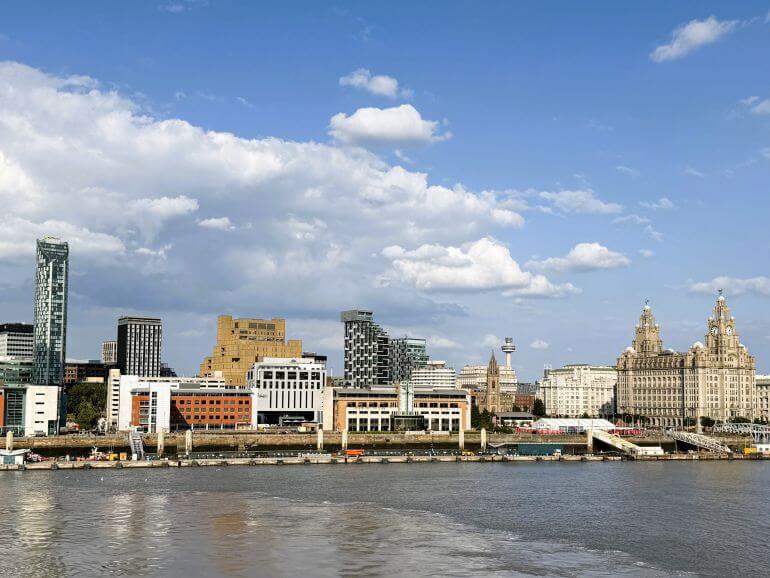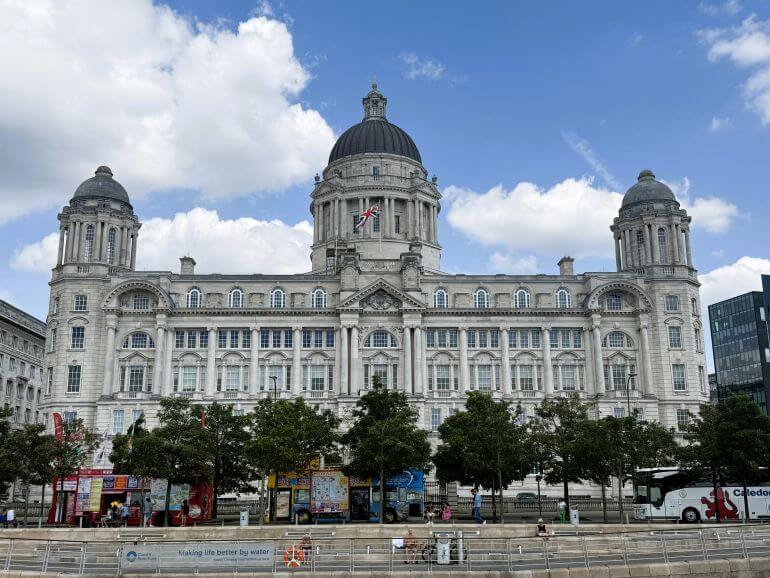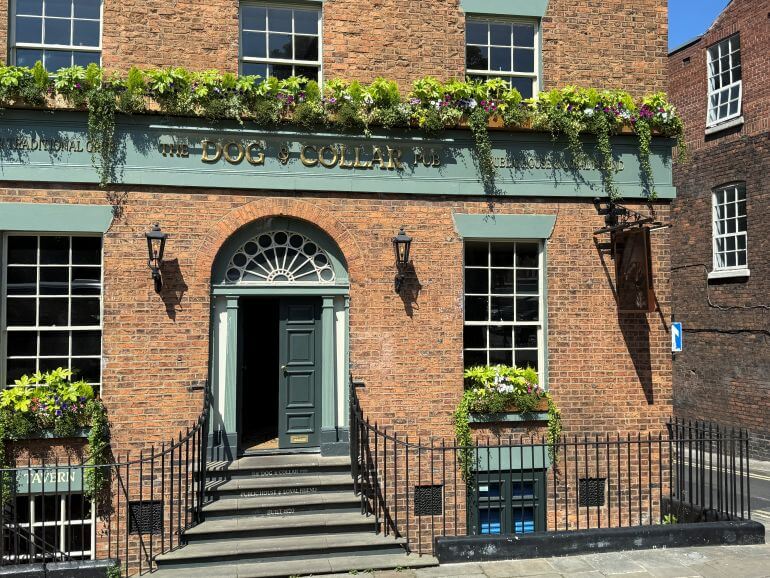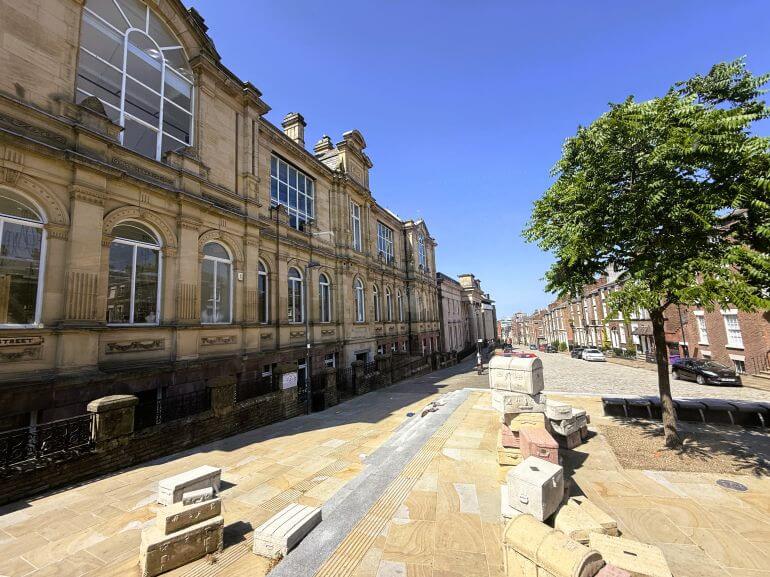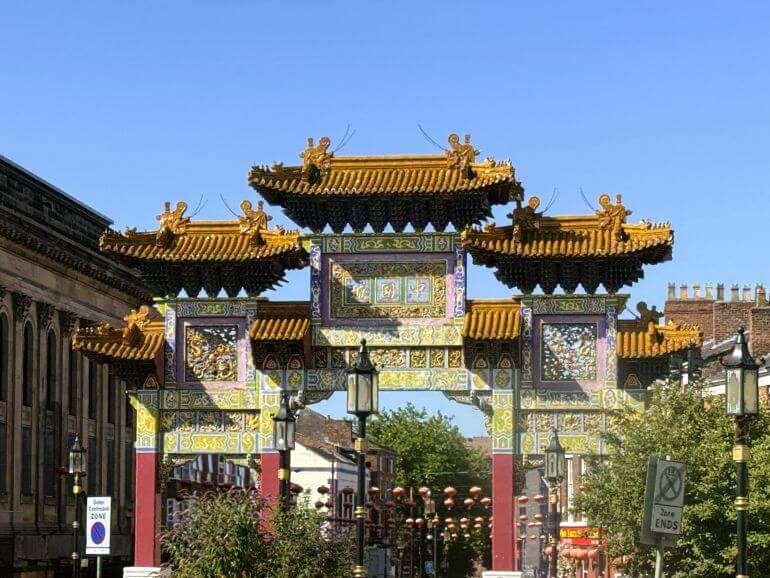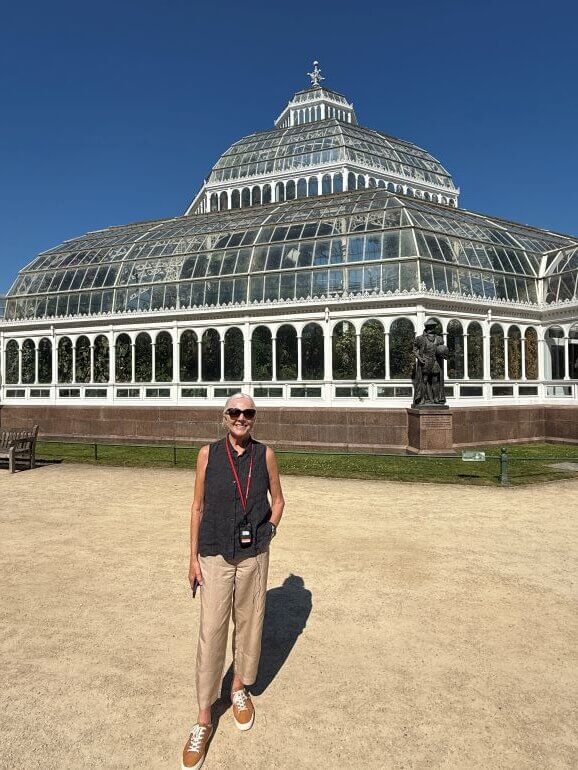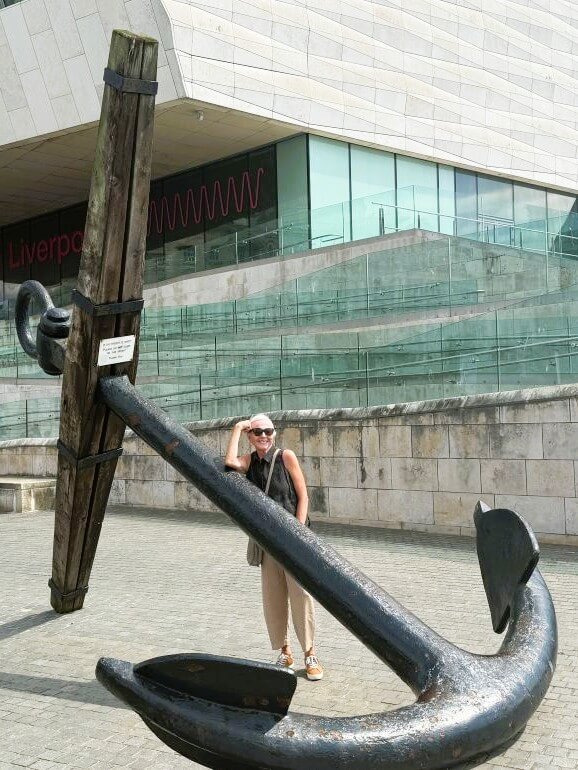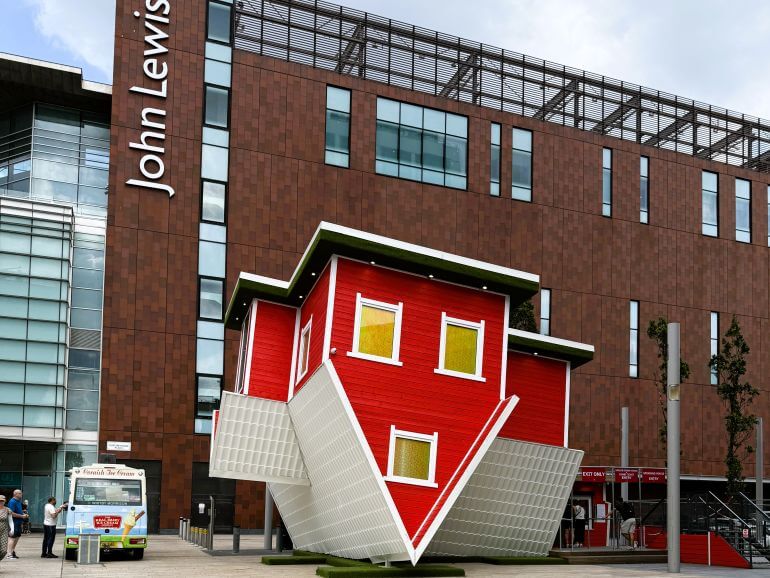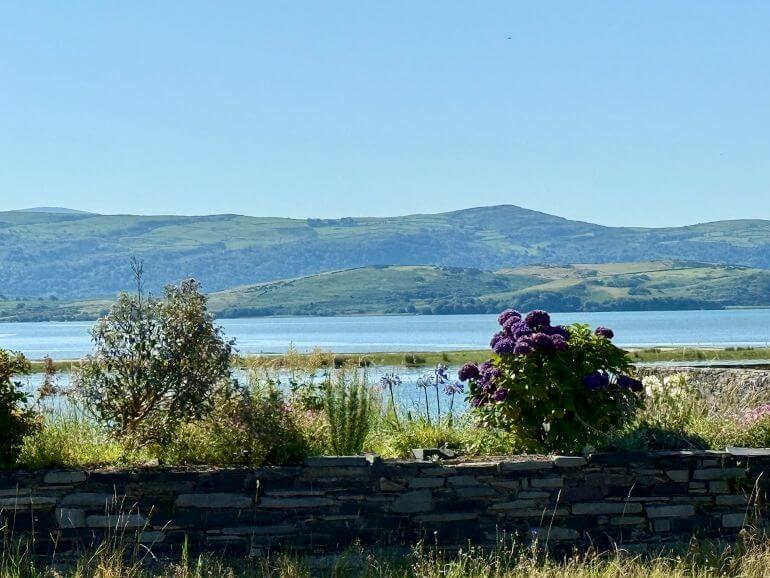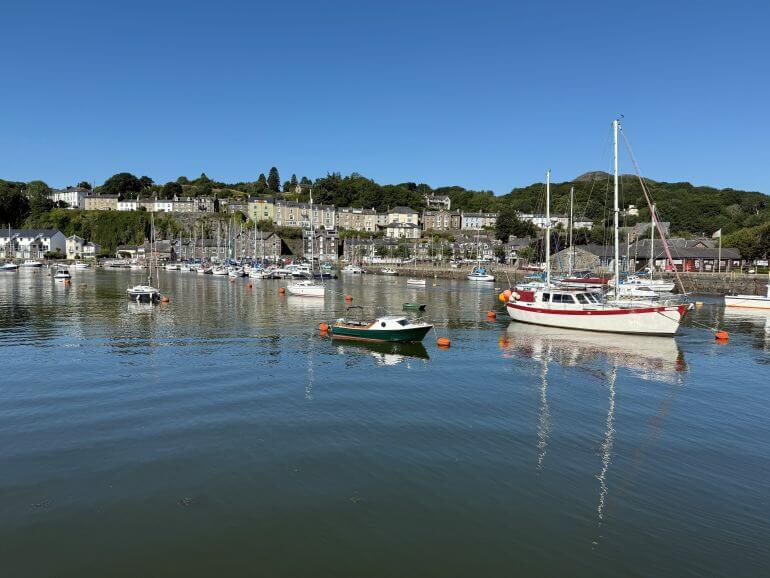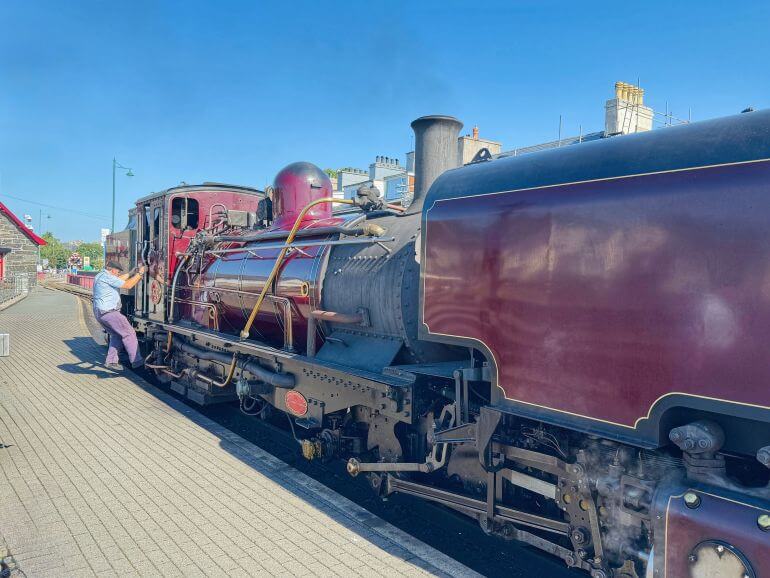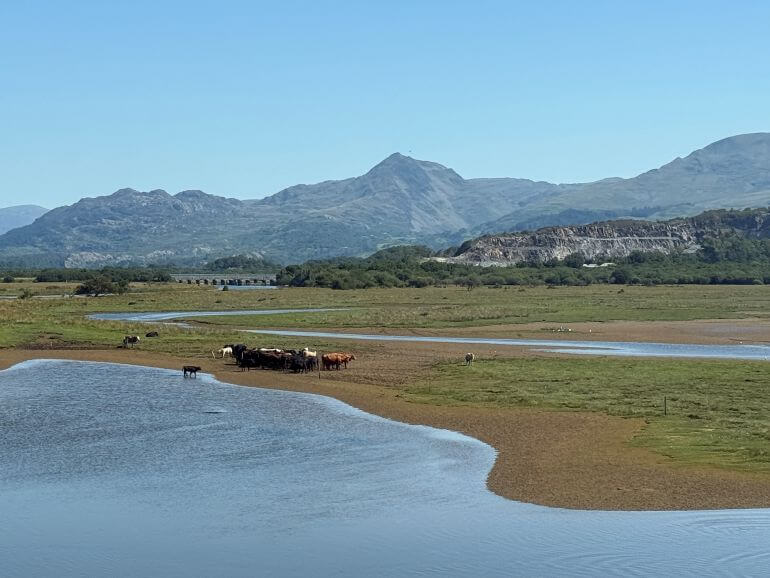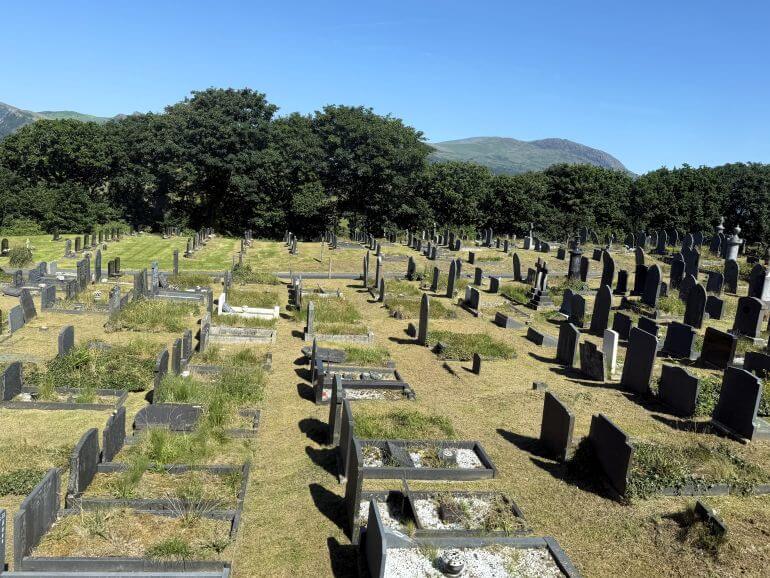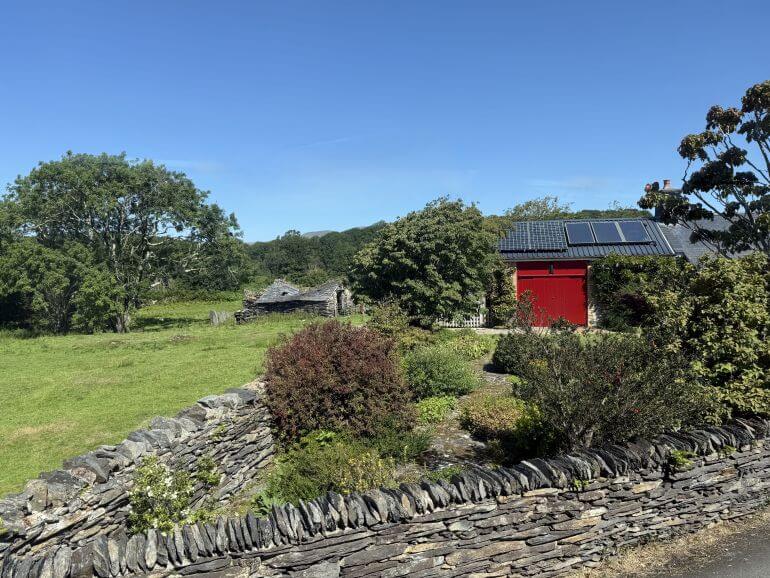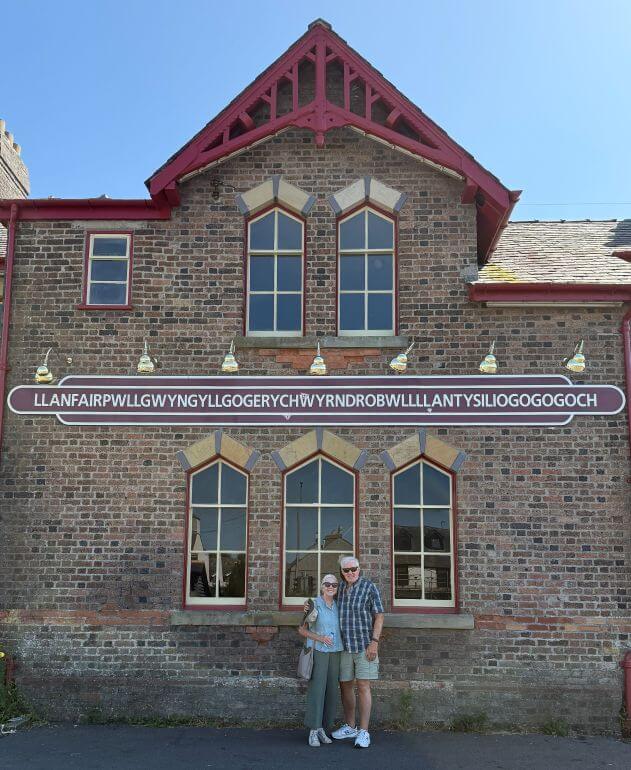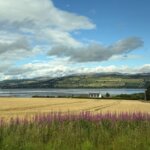Viking British Isles cruise destinations in England and Wales
This is the second in a series of articles about our Viking British Isles Explorer cruise from London to Bergen and features our shore excursions in England and Wales. Our first post covered our excursion experiences in Scotland. The destinations are not necessarily presented in the order in which we visited them. Plus — there is more to come!
Prelude to a British Isles cruise
Embarkation point: London (Greenwich Pier), England
Our British Isles Explorer cruise began in London, one of our favorite cities. We embarked on the Viking Jupiter in Greenwich on the south bank of the River Thames about five miles west of London. The pier is quite near the domed entrance to the Greenwich Foot Tunnel enabling you to walk beneath the Thames River where you can explore the town of Greenwich, the Cutty Sark (one of the fastest tea clipper ships), and the Royal Observatory (where visitors can stand on the Prime Meridian line).
From our ship’s location on the Thames, we had great views of the area, especially those of Canary Wharf and the London skyline at sunset.
Arrival night tip: If it works with your arrival time in Greenwich, consider taking the Viking optional excursion night cruise on the Thames.
Our shore excursion choices in England and Wales
Port: Tilbury (Port of London), England
As we slept, our ship sailed west a short distance on the Thames to Tilbury, where we docked and departed for shore excursions the next morning.
Our included excursion choice: Iconic London
We’ve visited London several times on our own and visited many neighborhoods, landmarks, museums, and off-the-beaten path locations. So instead of investing in any optional excursions that included things we’d already done, we chose to take this Viking included coach tour into London. We enjoyed the chance to sit back, relax, and enjoy the ride while seeing familiar sights again. It was also fun to drive through areas of London’s East End including areas like Poplar within the Borough of Tower Hamlets (that we’d not experienced before) on our way to the city center . You might recognize Poplar as the setting of the long-running Netflix series Call the Midwife.
Our local guide Mo (short for Maureen) provided many anecdotes along with commentary about major landmarks as well as sharing insider’s information. She has an engaging personality with a great sense of humor and was one of our favorite local guides of this cruise.
The coach took us close to numerous landmarks like St. Paul’s, Westminster Abbey, Parliament, Big Ben, Buckingham Palace, Trafalgar Square, and other points of interest. There were a few stops made to give us a chance to walk around a bit and take photos.
Our tour was on a day when French President Emmanuel Macron was visiting London, so we were able to see French and British flags adorning both sides of The Mall that stretches between Buckingham Palace and Trafalgar Square.
Optional excursion tips: A few examples of optional excursions offered while at port in Tilbury include visits to Highclere Castle (the “real” Downton Abbey) and other castles, the Tower of London, Churchill War Rooms, and Shakespeare’s Globe Theatre.
Port: Dover, England
There’ll be bluebirds overThe white cliffs of DoverTomorrow, just you wait and see!
You might recognize this lyric from the popular and symbolic World War II song. The cliffs were the first sight of England that the rescued troops at Dunkirk saw as they were evacuated during WWII.
We didn’t see bluebirds, but there were blue skies and a perfect view of the famous white cliffs from the ship as we arrived at port in Dover. Above the cliffs, Dover Castle overlooks the Strait of Dover joining the English Channel to the North Sea. The closest point that England is to Europe, the 350 ft. high white cliffs are visible from France on clear days.
Our included excursion choice: Historic Canterbury
A scenic drive by coach through the green countryside of the English county, Kent, took us to Canterbury, a charming and important English city. Our walking tour with a local guide began on a lovely tree-lined path along the River Stour.
Then we strolled the cobbled streets of the medieval city center within the ancient Roman walls. Cafes and shops in timber-framed buildings line the streets bustling with tourists and locals.
Then we had free time to explore Canterbury Cathedral on our own to view this famous landmark founded in 597 A.D. The cathedral is the headquarters of the Church of England and Anglican Communion, and along with St. Martin’s Church and the ruins of St Augustine’s Abbey is a UNESCO World Heritage Site. As we entered the extensive courtyard surrounding the cathedral, we admired the cathedral’s impressive Romanesque and Gothic architecture.
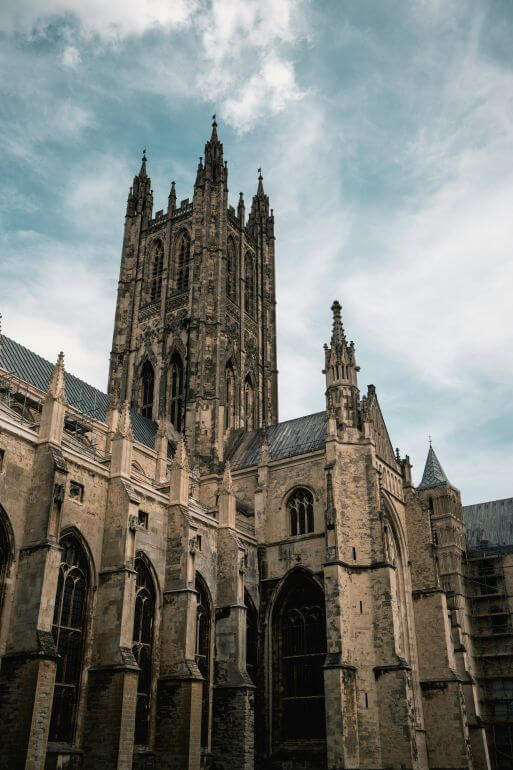
Canterbury Cathedral, England — Photo by Nishesh Jaiswal on Unsplash
As we moved from the huge nave (shown below) through an arch into the choir section, my impression was that the interior was much larger than I expected while viewing the exterior. In the photo below, is a portion of the nave where a long colorful tapestry was hanging from the ceiling, a temporary display honoring the expert weaving of Navajo women who helped with creating the circuitry for the initial moon landing.
Beyond the nave are other large chambers — the Quire (where many services take place), the Great Cloister (were monks lived over a thousand years ago), Trinity Chapel, Chapter House (meeting place of Benedictine monks from 11th – 16th centuries shown below), and the Crypt. Trinity Chapel housed a shrine to St. Thomas Becket until 1538 when Henry VIII had it destroyed. Today, a candle marks the spot.
Near an iron gate enclosing the tomb and armored effigy of the Edward, the Black Prince (known as such because of his signature black armor worn during the Hundred Years’ War) is a single burning candle on the floor representing the former location of the Shrine of Thomas Beckett (assassinated in the cathedral in 1170 by four of Henry II’s knights). Henry VIII had the shrine destroyed and Beckett’s remains removed.
Wine lovers tip: Surprise! There are vineyards in Kent and the wines (particularly sparkling and white wines) are lovely. In Canterbury, stop in at Corkk English Wine Specialists at 29/30 Burgate (centrally located near the cathedral) to browse the selections or make a purchase. We’re going to make a point to explore Kent wineries when we visit England again.
Port: Liverpool, England
She loves you, Paul — yeah, yeah, yeah!
Yeah, Paul McCartney (make that “Sir Paul McCartney”) was my favorite Beatle when I was a young girl, and it was great to spend time in Liverpool, the birthplace of the band in the early 1960s. Liverpool also boasts being the “World Capital of Pop” since 56 top musicians were born and raised here. But it’s not just about rich musical heritage. Liverpool is where the River Mersey meets the Irish Sea making it an important maritime commerce center, and there is a lot of art, culture, and history to discover.
Our included excursion choice: Iconic Liverpool
Though there were other optional tours that were focused specifically on the Beatles, we chose this overview of Liverpool which also gave us a view of several Beatles-related points of interest and related tour guide commentary. We also had ample time to see some of Liverpool on our own after the tour.
Our main expectation of Liverpool was the one we saw in media representations since the 1960s — a grey and gritty port city. We were surprised to find a bright modern city with well-preserved old buildings, new developments, and a modern bustling waterfront.
Our coach tour took us around the waterfront area, through the city center and residential neighborhoods giving us a glimpse of everyday life and local shops, restaurants, and pubs. The Dog & Collar (shown below) is a popular pub established over 200 years ago. Among the famous and historic landmarks we saw were the side-by-side Three Graces (the Royal Liver Building, the Cunard Building, and the Port of Liverpool Building), the Liverpool Anglican Cathedral, the Liverpool Metropolitan Cathedral, locations with Beatles significance, and Royal Albert Dock.
An installation called ‘The Hope Street Suitcases” near the Liverpool Institute for Performing Arts (Paul McCartnery is a Founding Patron and Paul, John, and George attended schools on the site) represents travel and migration. Each stone or cement suitcase is labelled with the name of a famous person with links to Liverpool.
Did you know that Liverpool has a Chinatown? Indeed, it does, and it is the oldest Chinatown in Europe, established in the late 1860s when Chinese migrants came to the city as seamen hired by the Blue Funnel Shipping Line. A strong connection still exists between Liverpool and its sister city of Shanghai. The Chinese Arch (below) is at the entrance to the area.
At Sefton Park, our guide walked us through a wooded lane to the Sefton Park Palm House, a unique Liverpool site. After a short introductory presentation, we had time to roam the grounds and conservatory on our own. We enjoyed discovering the various statues such as Charles Darwin, Captain Cook, and Peter Pan surrounding the all-glass structure and the interesting tropical flora inside.
After the organized tour we returned to the ship for lunch, then we disembarked again to explore the waterfront area and Royal Albert Dock on our own. The bustling area’s combination of the old — featuring Liverpool’s history as one of the world’s most important ports, and the new — representing major development in the last two decades (such as the Open Eye Gallery and Museum of Liverpool, galleries, restaurants, and shops.
It was nostalgic for us to see the Mersey Ferry, which we’ve known from a popular song of our youth, Ferry Cross the Mersey by Gerry and the Pacemakers. That goes way back in time! Make sure to take a photo by the huge anchor of the Merchant Navy training ship HMS Conway which was moored in the River Mersey for more than 80 years, beginning in 1859.
Before returning to the ship, we also took a short walk over to Liverpool ONE, a large 2008 residential and commercial development for shopping and entertainment. It is the largest open-air shopping center in the United Kingdom. Check out the Upside Down House, an interactive photo attraction (shown above) in the complex.
Optional excursion tip: We heard from a few fellow Viking guests that the “Beatles Experience” optional excursion was great. The tour includes visits to key locations like Penny Lane, Strawberry Field, and an exhibition focused on the life, times, culture, and music of the Beatles.
Port: Holyhead, Wales
Our optional excursion choice: Fflestiniog Railway and Lunch
In Wales, we docked in Holyhead, a town and port on Holy Island on the Irish Sea that has been the origin of many connections between Ireland and Great Britain. We were excited about the day ahead that included a coach ride and train journey through areas designated as a UNESCO World Heritage site in 2021.
A drive through farmland and along coasts with distant views of the Snowdonia Mountains brought us to the small seaside town of Porthmadog. We had some time there to walk along the harbor, enjoy views of the harbor and small island across the tracks from the train station.
The narrow-gauge tracks are just 1 foot, 11-1/2 inches, compared to standard gauge, 4’ 8-1/2”. We also had a chance to view the parked steam engines, which were to be pulling us on our ride though at the last minute, due to the unusually hot and dry conditions, a diesel engine locomotive was used instead to avoid fire hazards. The engines (called Fairlies after the inventor of the engines) were unique in their ability to pull very heavy loads up hills and around sharp curves, which was the requirement for the principal use for which the railway was designed, to take huge loads of slate from Blaenau Ffestiniog (then known as the slate capital of the world and the town that “roofed the world”), where slate was mined to Porthmadog, where it was shipped around the world.
We boarded the narrow, vintage cars (1 passenger on side, 2 on the other) to begin the 13.5 mile train ride to Blaenau Ffestiniog. Departing the station, the train crossed the Glaswyn estuary along the Cob (sea wall) and then the scenery continually changed as the train began climbing from the valley, through pastures and villages, then entering the ancient wooded slopes of the valley side.
Each portion of the route has an interesting story, and our journey was enhanced by the Traveller’s Guide (can be purchased at the station or on board) with its extensive descriptions of sights and a map to enable you to follow the route as you go. The picturesque ride offered a lot to see: nearby streams and other bodies of water, beautiful wildflowers, a few long tunnels, tiny villages, and small train stations.
For much of the ride, we were clearly in Welsh slate country, seeing slate rooftops, fences, all-slate buildings, mountains of waste slate (the pieces that were broken during mining or quarrying), and the slate headstones of Minffordd Cemetery (shown above).
At Blaenau Ffestiniog station, we were met with huge slate sculptures representing slate splitting chisels. This was the end of our railway excursion and we boarded a coach for the rest of our journey through Wales. In the village of Betwys-y-Coed, the gateway to Snowdonia National Park, we had lunch at the Royal Oak, a historic hotel, and then had a short time for a pretty walk along the river and around the small town to browse the shops.
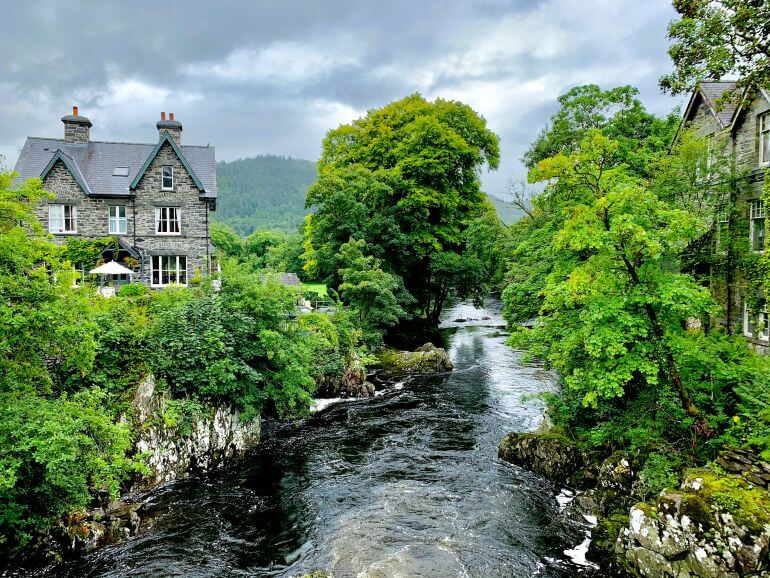
Village of Betwys y Coed, Wales — Photo by Colin Jones on Unsplash
Heading back to our ship at Holyhead, we had a rest stop in a little village notable for its very long name —
Llanfairpwllgwyngyllgogerychwyrndrobwllllantysiliogogogoch
This long 58-letter name translates to “St. Mary’s Church in the hollow of the white hazel near a rapid whirlpool and the Church of St. Tysilio near the red cave”. The name was created as a publicity stunt in the 1880s to attract tourists and, not surprisingly, it is the longest place name in Europe.
Other optional excursion tips: Other optional excursions included hiking, Caernarfon Castle, a wildlife reserve, brewery, Welsh whisky tasting, culinary specialties, and a visit to a Welsh farm — something for everyone!
Stay tuned for more about the destinations and experiences of our British Isles Explorer cruise with Viking.

